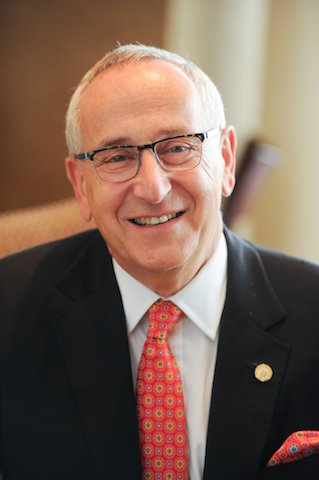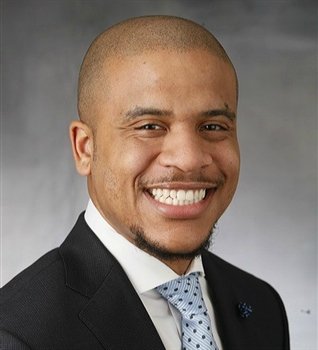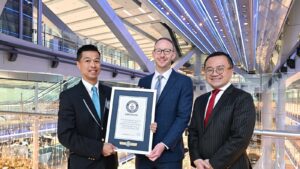Recently, three distinguished members of the Million Dollar Round Table (MDRT) – Sandro Forte, DipPFS, CSP, Tony Gordon and Brenton D. Harrison agreed to talk with Insurance Forums for a “Q&A” about how they have successfully navigated the often challenging waters of dealing with clients from different generations.
In today’s Part 2, the panelists talk about how to help Millennials close their excessively large life insurance coverage gap, how advisors can begin to involve and work with the children of clients in order to ensure continuity, and share some final thoughts on working with different generations of clients.
Be sure to check out Part 1 from earlier this week, where the panelists talked about their “ideal client,” whether they have made a conscious effort to target a younger generation, and differences in preferences between generations.
Once again, we want to thank MDRT for their cooperation in making this happen, as well as each of the panelists for graciously sharing their high-level expertise. There are some great tips and information that can help producers striving to grow their practice reach that next level.
- SEE ALSO: Selling by Generation Part 1
Q5: How to help Millennials close the coverage gap
Insurance Forums: The Millennial generation has been called “the least prepared for unexpected life events” due to a lack of adequate life insurance coverage, according to the latest edition of New York Life’s Life Insurance Gap survey. They aren’t buying life insurance at the same rate as previous generations. What are some ways advisors can reach Millennials and help them eliminate their significant life insurance coverage gap ($352,000 according to the NYL survey, compared to $253,000 for Gen X and $110,000 for Boomers)?

Gordon: I was once given a referral to a young professional couple with a growing family. When we discussed the need for life insurance, they responded with “We’ll have to think about it.” It can be frustrating when the need appears evident, yet not everyone perceives it in the same way. These potential clients’ priorities did not align with my services.
Thirty years earlier in my career, I may have worked with them on other financial objectives, but my areas of expertise changed and I no longer felt I was the best fit for this age group. An advisor has time and expertise, both of which must be spent where they are most appreciated and effective.
While Millennials may not be the ideal clients for many advisors, the use of robo advisors can supplement traditional financial planning to narrow the savings gap. Younger generations may be more comfortable with a technology-based service for some of their financial planning and can justify the cost. Once these consumers are able to grow their earnings and reach a stage in their life in which they see the need for personable and enhanced financial guidance, we can then see them as potential clients.
Harrison: As an advisor, the first step is understanding that a big reason Millennials don’t see the value of life insurance is that, in their minds, they can’t afford to make it a priority. They may be struggling to find an affordable place to live, pay off student loans and establish basic savings, so the idea of an additional payment for something that might not even benefit them while they are alive isn’t appealing. In my work, I incorporate strategies to help them decrease debt, improve credit and tackle other financial topics. These strategies don’t pay me directly, but they do build more room in my clients’ budgets to afford insurance. If you can help someone pay off credit card debt that was costing them $300/month, all of a sudden a term or permanent life insurance policy is more palatable. If you help them solve the problems as a partner in their overall financial health, even if they don’t directly lead to compensation, you store up goodwill for when it’s time for them to buy something that does.
With the Millennial generation having children later and later, we as advisors also have to communicate the value of purchasing insurance before you actually need the coverage. Because of their competing priorities, even young people who do purchase coverage are likely to not purchase enough to provide once they have kids and other obligations. If we can illustrate the long-term cost savings of purchasing that coverage now, as opposed to waiting until the obligations arise, we can show them how more coverage actually fits into their plan of stable monthly finances.
Lastly, I encourage advisors who work with Millennials to read what they read and listen to what they listen to about financial advice. You would be surprised what recommendations they hear online or from places like the Financial Independence Retire Early movement. Knowing what they consume can give you insight into the opinions they form about insurance before they even meet you.
Forte: Lack of adequate life insurance coverage may stem from a perception that the need for life insurance is not as great today as it was previously. Certainly in the U.K. there are now many more options other than life insurance to mitigate estate taxes and pass on assets to future generations. Whereas Baby Boomers were taught to live and work for the benefit of others, typically their children, Millennials tend to live for themselves and have to confront the rising burden of student debt.
Affordability has also become much more of an issue. Coupled with this, younger clients do not see insurance as a priority because they tend not to look so far ahead and see their need today as more important. We have many more conversations with these clients around critical illness insurance, income protection and private medical insurance. In my opinion the very best way to serve this market is to sell shorter term, and therefore cheaper, coverage and help them to build an understanding of the importance of protection without prohibiting it because of cost. Better still, seek out the baby boomers and utilise their gift allowances to protect their loved ones rather than exacerbate a spending problem by making cash gifts.
Q6: Grooming the next generation
Insurance Forums: Advisors who work with senior clientele sometimes face a risk of attrition over time if they have not made an effort to establish relationships with heirs of those clients. What kind of steps do you take to involve the next generation?

Harrison: I’m actually the young advisor who has had the benefit of an older advisor taking me under their wing. The CEO of our firm is 20 years older than me and we have another advisor who is 20 years older than him. We each help one another understand the language of our respective generations, which is extremely valuable when you try to communicate with a client who is at a completely different life stage. Sometimes their advice and those communication skills allow me to effectively communicate with a Baby Boomer.
In other instances, the divide is so great that the client can benefit from a partnership with myself and another advisor in their respective generation. I think the same would be true for an older advisor trying to establish a relationship with the heirs of their clients. You have to put your pride to the side and realize that no matter how strong of a communicator you are, there is always a chance the heir will only see you as the person who sold their parents insurance. By talking to a younger advisor about how they would approach the case, or even bringing that advisor in to bridge the gap, you can learn more about what makes the younger generation tick and what moves them to act.
Forte: The easiest and most successful way to build the next generation of clients is to focus on the Will and Trust arrangements. Where at least one of these is in place an adviser should expect to meet the trustees, guardians and/or beneficiaries. Truly holistic financial planning cannot take place unless all parties to the arrangement understand their roles and responsibilities and continuity can be provided by the same trusted advisor. Something as simple as changing your request for a meeting from, “Would you introduce me to…,” to a direct statement such as, “We need to meet,” will prove more effective when it comes to gaining referrals and building relationships with the next generation.
Gordon: When I mentor successful advisors, most are doing well because they have an investment offering and older client base. I remind them to find ways to make contact with the next generation and learn to speak their language. Regular contact may not be necessary based on preferences and needs and services, but advisors should make connections early on so that business does not dissipate.
A good advisor will know who the client’s executor is and will connect with them prior to the passing of the client. They should become familiar with the executor and the client’s children to build trust early on. If advisors establish their presence and the comfort they can bring during stressful times, heirs will come to them and potentially extend the relationship.
These connections serve as referrals in the sense that they can be worth prospecting now or in the future should their needs align with the advisor’s services. Risk of attrition should not be a concern since a good agent should always be prospecting. While they may be more aggressive in their prospecting efforts early on, advisors maintain a solid client base through a continuous stream of new clients.
Q7: Final thoughts
Insurance Forums: Is there anything else you’d like to add about targeting specific generations?

Forte: Baby Boomers are methodical and value excellent service from their advisors. They want to be presented with the facts and have a choice in the matter. Millennials and younger generations tend to look for speed, ease and simplicity with financial planning. To effectively target specific generations, ensure you understand these differences and tailor communications, plans and services accordingly.
Gordon: The best way to acquire clients is through referrals. To connect with the clients you want to work with such as a specific generation, specify this in the referral request. This enables younger advisors to expand their client base to older generations or older advisors to establish a younger clientele. You can achieve multigenerational planning by asking for referrals to clients’ children and parents. The clients who get the best value from us are the ones we don’t act for in isolation, but we act for the whole family.
Harrison: You can’t use the same tools and techniques to serve clients of all ages. I work with the generation that I understand and have a passion for, but I have to lean on others to help me learn ways to communicate effectively with ones that I don’t relate to as naturally. If you feel like you need to establish a presence with a generation whose thought process is foreign to you, invest your time in learning how they think and what they perceive as valuable advice, rather than leaning on what’s worked for you in the past.
- SEE ALSO: Selling by Generation Part 1
About the Panelists
Sandro Forte, DipPFS, CSP, a 21-year MDRT member with 20 Top of the Table honors and has built one of the UK’s most successful and highly respected businesses. His book, ‘Dare To Be Different’ has sold over 400,000 copies, across more than 60 countries – and it is now published in 8 languages.
Tony Gordon built one of the U.K.’s most successful and profitable financial services businesses during a career spanning 50 years. While doing so he established himself as one of the most successful practitioners and best known personalities in his field. He is a Past President of the L.I.A., now known as the Personal Finance Society, the U.K.’s association for financial advisers. He served for 8 years, representing advisers, on the Board of the U.K.’s financial services regulator. He has spoken abroad in over 50 countries and has been a member of MDRT for 42 years, qualifying for Top of the Table for 41 years. He served as President in 2001, the first from outside North America in MDRT’s 75-year history. Having retired from leading his own firm, Tony now focuses his energies on mentoring financial advisers and speaking. Tony’s best-selling book, “It Can Only Get Better, Tony Gordon’s Route to Sales Success,” has sold over 100,000 copies and is available from the MDRT Store.
Brenton D. Harrison is a Financial Advisor with Henderson Financial Group, Inc., focusing on healthcare practitioners, business executives and religious leaders. He entered the financial services industry with Innovative Financial Group and brings the latest financial solutions to the clients he serves with HFG. Brenton is also a qualifying member of MDRT.













